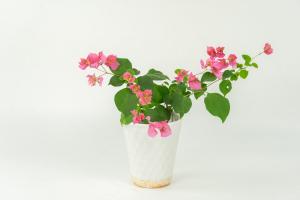Introduction
Tomato plants are a common sight in many home gardens and farms. These plants are known for producing flavorful and nutritious fruit. However, sometimes the leaves of the tomato plants curl up or become distorted, which can affect the plant's overall health and productivity. In this article, we will explore the reasons behind what makes a tomato plant leaves curl.
Environmental Stress Factors
One of the most common reasons why tomato plant leaves curl is due to environmental stress. Environmental stress factors such as extreme temperatures, poor soil quality, water stress, and light intensity can cause the leaves to curl or become misshapen. For example, high temperatures during the day and low temperatures at night can cause the leaves to curl. Additionally, when there is a lack of water, the plant may start to curl its leaves in an attempt to conserve water. Similarly, when the soil quality is poor and lacking in essential nutrients, the tomato plant may become stressed, resulting in leaf curling.
Viral Infections
Another reason for leaf curling in tomato plants is viral infections. Viral infections such as tomato mosaic virus and tomato yellow leaf curl virus can cause the plant's leaves to curl upwards, turn yellow, and become mottled. These viruses are usually transmitted through sap-sucking insects such as aphids or whiteflies. The infected plants have stunted growth, produce fewer fruits, and have lower yields. It's essential to remove infected plants and their debris immediately to prevent the virus from spreading to other plants.
Fungal Diseases
Fungal diseases can also cause tomato leaves to curl. Fungi such as powdery mildew and septoria leaf spot can affect the plant's leaves and cause them to curl or twist. Powdery mildew appears as a white powdery substance on the upper part of the plant's leaves, and if left untreated, the leaves may curl or become distorted. Similarly, septoria leaf spot causes the leaves to develop small, dark spots that gradually spread, causing the leaves to curl and yellow. Fungal diseases can be treated with fungicides or through cultural practices, such as improving airflow and removing infected plant debris.
Pest Infestation
Pest infestation is another reason for tomato plant leaves to curl. Common pests such as spider mites and aphids feed on the plant's sap, causing the leaves to curl or become distorted. Spider mites are tiny pests that cause leaves to turn yellow, dry out and become curled. Aphids, on the other hand, can cause the tomato plant leaves to curl downwards, and the plant may also develop sticky residue from the insects' secretions. Pesticides or natural predators such as ladybugs can be used to control pest infestations.
Nutrient Deficiency
Tomato plants require certain nutrients to grow and produce healthy fruit. A lack of essential nutrients can cause leaf curling. Common nutrient deficiencies include nitrogen, calcium, and magnesium. Nitrogen deficiency causes the leaves to turn yellow and curl, while calcium deficiency causes the leaves to curl upwards and become distorted. Magnesium deficiency leads to a yellowing of the older leaves, and they may eventually curl. Fertilizers that are high in the deficient nutrient can be used to treat the deficiency.
Conclusion
In conclusion, there are several reasons why tomato plant leaves curl. Environmental stress, viral infections, fungal diseases, pest infestation, and nutrient deficiencies are all culprits. Identifying the cause of the curling and addressing it promptly can help prevent irreparable damage to the plant and ensure a healthy tomato crop. Regular inspection, proper maintenance, and timely treatment of tomato plant problems are crucial for a successful harvest.

 how many times do yo...
how many times do yo... how many planted tre...
how many planted tre... how many pine trees ...
how many pine trees ... how many pecan trees...
how many pecan trees... how many plants comp...
how many plants comp... how many plants can ...
how many plants can ... how many plants and ...
how many plants and ... how many pepper plan...
how many pepper plan...































